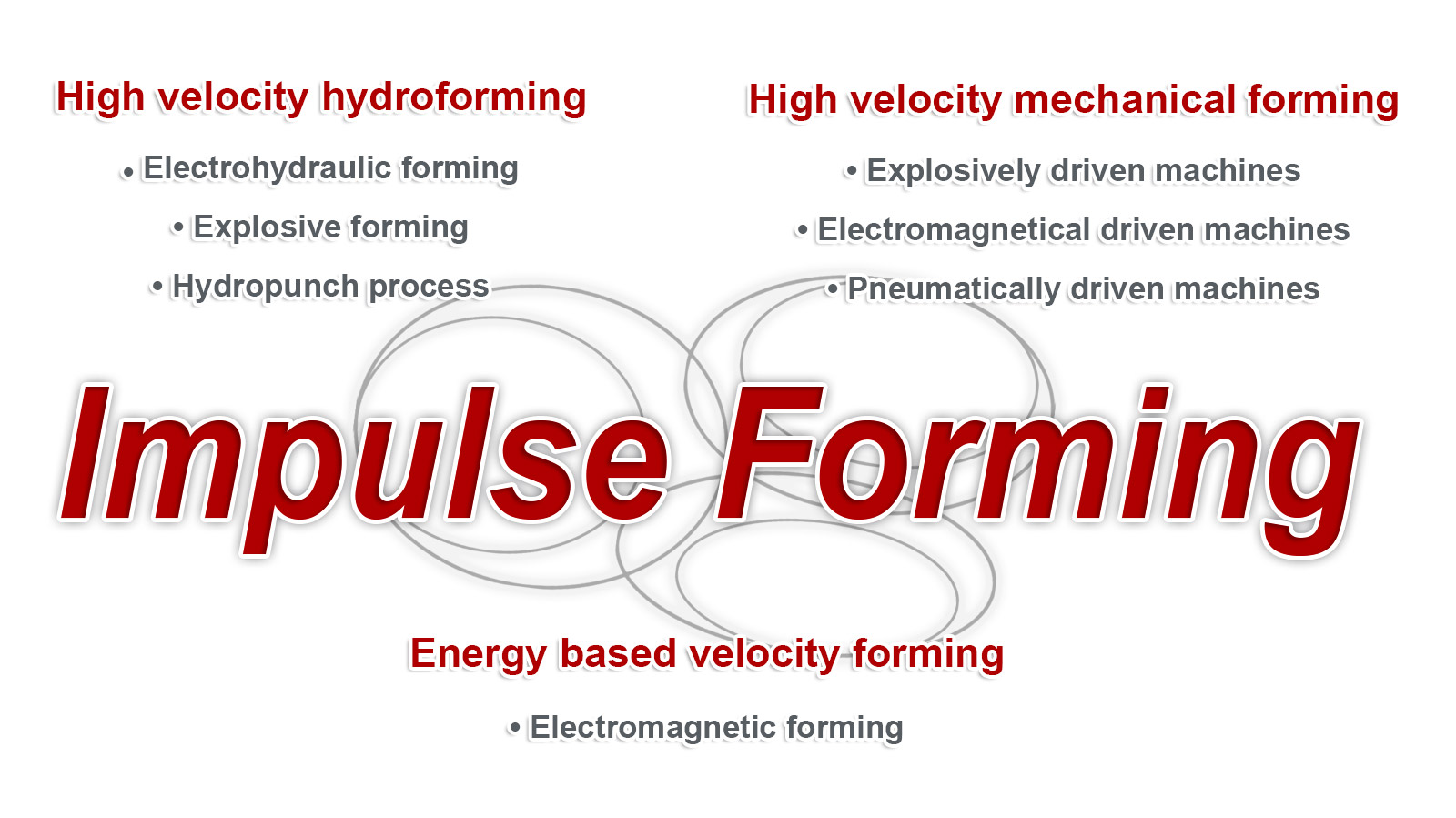Impulse Forming
Definition
According to [LAN93] impulse forming or high velocity forming includes all processes converting stored energy in order to form workpieces in a very short time. In [Bru68] high velocity forming is defined more precisely as “any process which operates at forming speeds of more than 50 ft/s” (approx. 15 m/s). Typical strain rates during impulse forming are in the range of 10^2 to 10^4 and the mere forming duration is usually in the range of microseconds or milliseconds. To achieve such high velocities three typical energy sources are being used. These are:
- Chemical energy (explosive forming, propellant forming)
- Electrical energy (electrohydraulic forming, electromagnetic forming), and
- Mechanical energy (high rate mechanical presses, hydropunch process)
Electrohydraulic forming, the hydropunch process, propellant forming and some variants of explosive forming can be grouped as high rate hydroforming processes.
Advantages and Disadvantages of Impulse Forming
Due to the high strain rates compared to conventional forming technologies, the impulse forming technologies feature several advantages as e.g.
- increased formability for several materials including aluminium alloys as e.g. EN AW-6061 and EN AW-7075, titanium alloys as e.g. Ti-6Al-4V, iron, steels as e.g. 42CrV6, copper, and some magnesium wrought alloys as e.g. AZ31 or ZEK100. This phenomenon is often called hyperplasticity and was investigated in several publications [ALT96, BAL92, BAL94A, BAL94B, ELM04, PSY06, WEI95].
- reduced wrinkling and springback effects [NEU09],
- the possibility to use inertia locking mechanisms in the tool design allowing to apply smaller and thus cheaper presses [Rup79],
- the adiabatic character of the impulse forming technologies [ZEN44], which allows exploiting the forming heat more efficiently than in quasistatic forming operations.
On the other hand, typical disadvantages are
- high acoustic emissions,
- the necessity of evacuating the die volume before the forming operation, and
- increased demands on the measurement technique.
